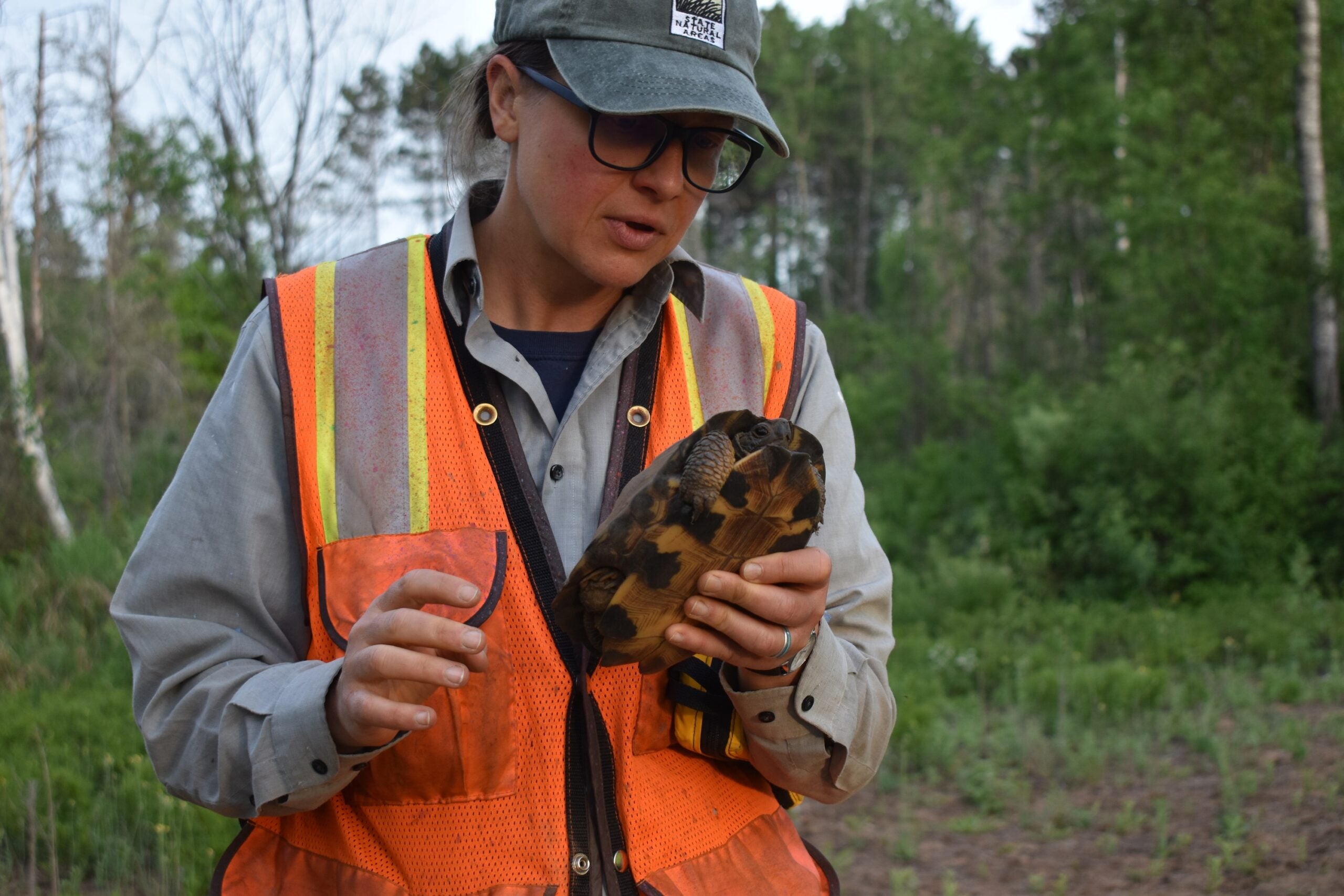The deep seas harbor some incredible creatures. Judith Siers-Poisson finds out what lives at various levels, and how they had adpated to thrive in extreme conditions.
Featured in this Show
-
Developing 'Guiltless Wonder' About The Sea
There are a lot of books and articles that talk about the wonders of the natural world, but then quickly go on to say that humans are irrevocably damaging it. While that’s often true, the approach might make people care less, instead of more.
Stephen and Anthony Palumbi would like to change that. Stephen Palumbi is professor of biology and director of the Hopkins Marine Station at Stanford University. Tony Palumbi is a science writer and novelist whose work has appeared in The Atlantic and other publications. They wrote “The Extreme Life of the Sea” together, and they feel that the prevailing narrative, while true, “exhausts people.”
Instead, their aim is to fill a gap between what impact humans are having on habitats like the deep sea and the lack of emotional connection they seem to feel. They describe that goal as “a simple sense of guiltless wonder about how wonderful the ocean’s life actually is.”
Anthony Palumbi is a fiction writer by trade, and those skills served him well. As father Steve explained, they wanted to introduce sea creatures “as characters, and show how magnificent they really are.”
In any good story, it’s important to set the stage, and the stage for a story about the sea is one of mind-boggling proportions. It’s a commonly known statistic that 70 percent of the Earth’s surface is water, but Steve Palumbi said that that figure is not the one to really focus on.
“Under the surface of the ocean, there is, on the average, a mile or so of ocean water,” he said. “So, that surface, and that mile deep of habitat, makes the ocean the biggest habitat on Earth. It actually makes the deep ocean the biggest place where organisms live in the known universe.”
The Palumbis share stories of ancient sea creatures, many of whom are no longer around. But one, the horseshoe crab, isn’t only still around, but is doing quite well. The fossil record shows that they have been around for about 400 million years, according to Steve Palumbi. Not only that, those fossils are “virtually indistinguishable” from today’s creatures.
To describe these unmistakably prehistoric creatures, Tony Palumbi read an excerpt from the book:
The best way to learn about horseshoe crabs is simply to find one on the beach and turn it over. Be warned — though the animals are harmless, most beachgoers are unprepared for the clawed shock beneath. Ten long, spindly claw-tipped legs reach and curl like dead calcified fingers. They emerge from a glistening insectoid thorax in front of a heavy abdomen and behind a thin head adorned with tough, claw-tipped feelers and topped by a carapace like an alien helmet. Lacking jaws or teeth, horseshoe crabs grind up food with their legs and shuttle it to the tiny sucking orifice. These creatures look like nothing so much as aliens from another planet.
In the book, horseshoe crabs are described in real-world terms: “Like the Volkswagen beetle, they stick out like a sore thumb but persist in sturdy practicality.” And practical they are. Steve Palumbi said that the helmet-like carapace is used to push through the sand and sediment, and then those ten legs sift through to find small creatures to eat. Each of those ten legs is able to grab food and move it to the mouth.
Horseshoe crabs also pioneered a new type of gill, which Steve Palumbi called “book gills.” They resemble the pages of a book being flipped, which moves water: that’s how horseshoe crabs are able to access oxygen.
More modern crabs are often seen scuttling across the sand, but with horseshoe crabs, Steve Palumbi said that “it’s not a very high octane life that they have. … They tend to live slower lives, not the frantic scrambling around that later crabs are able to do.”
While horseshoe crabs are not at risk from commercial fisheries, Steve Palumbi noted that because of the unique make-up of their blood, they are used by biomedical testing companies for research on endotoxins, a bacterial by-product. One of the practical applications is for testing people for sepsis, which Steve Palumbi said involves endotoxins in the blood. “Horseshoe crab blood is the most sensitive indicator of endotoxins in the human system.”
Episode Credits
- Judith Siers-Poisson Host
- Judith Siers-Poisson Producer
- Stephen Palumbi Guest
- Anthony Palumbi Guest
Wisconsin Public Radio, © Copyright 2024, Board of Regents of the University of Wisconsin System and Wisconsin Educational Communications Board.

